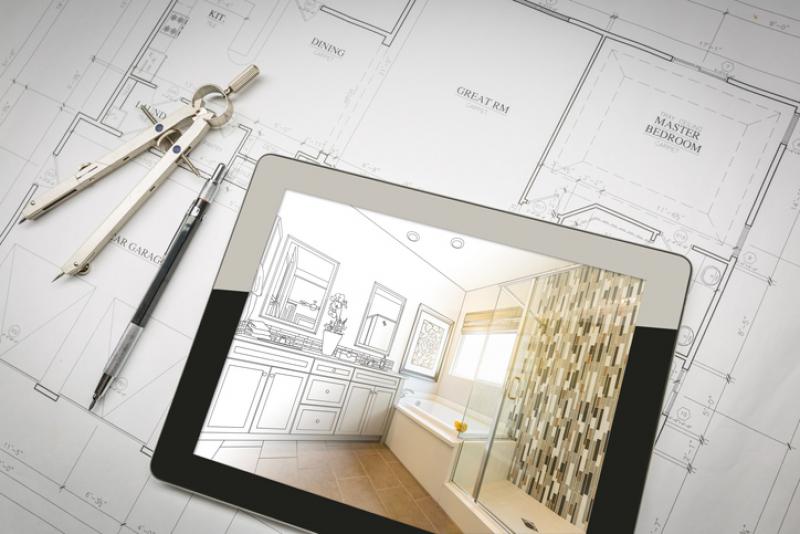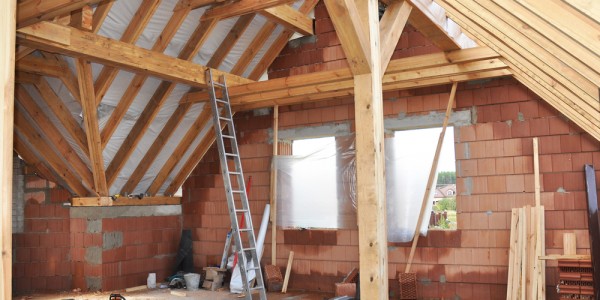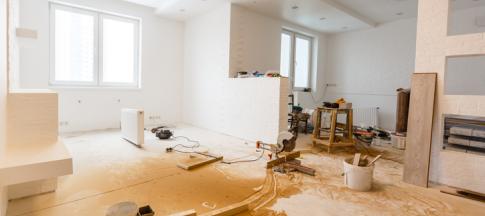Extending your home gives you the opportunity to really make it your own and to get the most out of your property.

Whether you want to bring light and air into your home with a conservatory, or increase the re-sale value by adding extra rooms and space, a home extension project is a big undertaking. Knowing what to expect before your start the process is important.
Although it may seem like a daunting task, an architect or surveyor has the knowledge and skill to take you through the process of updating and improving your home. If you think a home extension project is right for you, contact an architect or surveyor to discuss your options!
To help you on your way we spoke to surveyors Roger North from Roger North Long & Partners and independent chartered surveyor and valuer Tim Davies, who shared their top tips on extending a property.
Before starting any renovation project
Contact your home insurer to clarify what is and isn’t covered during the project, and to make any necessary updates to the information on your policy.
If you're an Admiral Home Insurance customer, you can get in touch with our Customer Service team.
Step one of a home extension
The first things you need to consider before starting a home extension is what do you want and need from the renovation? Once you’ve gathered this information, prioritise the items according to importance from ‘essential’ to ‘desired.’
Mr North recommends contacting a surveyor or architect because they’ll be able to prepare plans that will meet the applicable planning and building regulations.
He thinks the most-common mistake people make when embarking on a home extension project is not hiring an architect or surveyor.
“They obtain building plans and simply ask a building contractor to construct the extension based on those plans, with no detail specification, cost, or contract period agreement,” he said.
Mr Davies agreed: “Appointing a builder directly, without any form of due diligence or contractual framework, is a recipe for disaster – I often get called in to try and help with these matters as they are on their way to Court.”
A surveyor or architect takes a more holistic approach by taking all relevant matters into consideration at the design phase, saving time and money in the long run. Mr Davies advised to “meet with them to establish if you feel comfortable working together.” You should feel confident they are able to take the project from the beginning stages all the way to completion before hiring them.
According to Mr North, “[Your surveyor or architect] will prepare the building plans, can provide advice on party wall matters and structural matters, will prepare the specification of works, and obtain tenders from contractors, supervise the building works, and confirm the final certification.”
Be neighbourly
Mr North advises his clients to consider anyone else who may be affected by the renovations while working on the design.
“Speak to your neighbours if the changes are likely to affect them. Not consulting with neighbours is the second-most common mistake people make when adding an extension to their home.”
Your architect or surveyor should work closely with you to determine the best place to add the extension, and the best way to work it into the existing design.
Mr Davies commented that the second-most common mistake people make when extending their home is ill-conceived design, often with drawings they produce themselves. They end up with a substandard extension that doesn’t really work as it should, or add value to the house.
Local planning policies and building regulations may determine what you can do with the design and your architect or surveyor should be aware of these and take them into consideration during the design phase.
You should expect this initial phase to take about three to four weeks.

Get planning permission
Once the design is finalised by your architect or surveyor, they’ll prepare them properly for submission to the local council’s planning department.
Planning permission is usually required if you want to build something new, make a significant change to your property or change the use of your home.
Your local council will be able to advise whether planning permission will be required or not.
It generally takes about three weeks to finalise the plan, and a week for the council to register the paperwork once submitted. If planning permission is required, your architect or surveyor should handle the application. In most cases, you can expect to pay a fee in order to submit the application.
Planning application costs can vary considerably depending on the type of permission you're applying for. Your local planning authority will be able to explain the fee related to your application and the method of calculating.
Fees should be paid to your local planning authority at the time of submitting the application. You should contact your local planning authority if you are unsure on how to make a payment.
If permission is required, the 21-day ‘consultation period’ begins, during which the council will seek comment on the application from anyone who may be affected by the work.
The planning application phase can take eight to twelve weeks, depending on whether the plan is accepted by your appointed planning officer or is referred to committee for approval. Having consulted with your neighbours during the design phase will hopefully prevent any concerns during the consultation period which may delay the project.
If planning permission isn't needed, you and your architect or surveyor should either ask for written confirmation from the planning office or obtain a ‘Certificate of Lawfulness’ to avoid any problems in the future.
You don’t have to wait for this confirmation to begin preparing the building regulation drawings.
Permission granted
Once permission is established, your architect or surveyor will require another two weeks to prepare building regulation drawings. These drawings are more detailed than the design plans initially submitted for the planning permission phase.
Sometimes called ‘working drawings,’ these plans should contain all the relevant information regarding regulations and necessary approvals. If all the necessary information is provided, you can expect approval within four to six weeks. Your builder will also use these to complete the work, so it is recommended you outline the specifications of the design in these drawings, as well.
Once the regulation drawings are accepted, you can begin work on your project. How long it takes to complete the renovation will depend on many factors, such as the size and scope of your project, and the availability of your chosen builder and their crew.
- If you could do with some extra cash to fund your project, see how an Admiral Home Improvement Loan could help.

